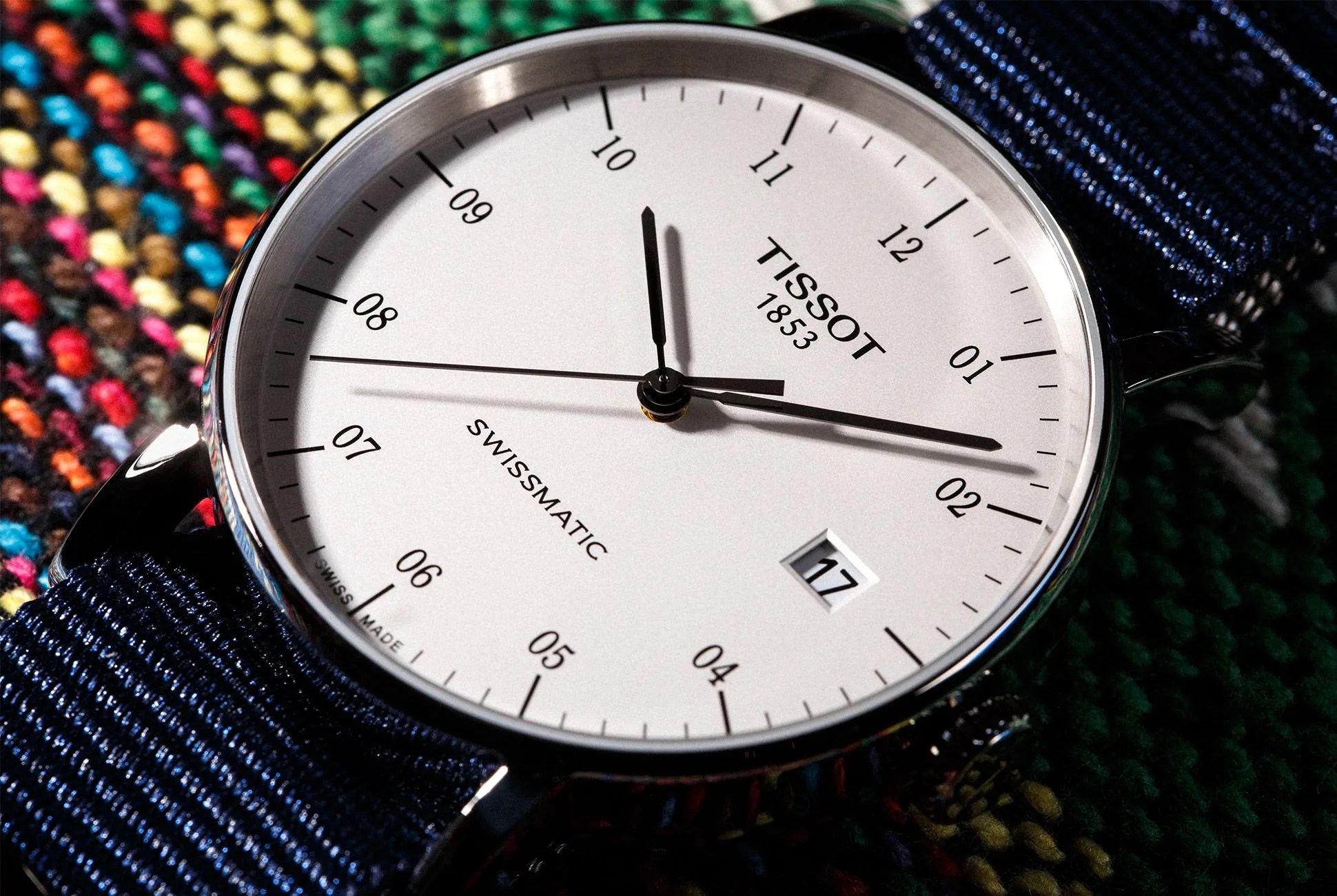3 photos
Back in 2013, Swatch Group made an achievement that remains unmatched today: it produced a Swiss-made automatic watch movement entirely through an automated assembly process. It did so by pairing down the number of parts used (only 51 in this case, compared to well over one hundred for pretty much any other automatic) and combining them all with a single screw. Concessions had to be made — like using synthetic materials in place of metal, forgoing any decoration and accepting an inherent dispensableness once the movement fails — but it was one of the biggest innovations the watch industry had seen in years.
Now, four years later, no one is really talking about it. Part of the problem, it would seem, is its lack of ubiquity — the movement has only been available in the Swatch Sistem51, which up until last year only came in a plastic case — hardly a game changer. A steel version eventually came out but it still felt more like a novelty than an everyday watch. However, given Swatch Group’s large swatch of brands, packaging up the movement into a more wearable, everyday package from another brand in the conglomerate’s portfolio could bring the revolutionary movement further into the mainstream.
Tissot’s Everytime Swissmatic is the group’s first attempt at that strategy. Coming in at just $395, it’s Tissot’s most entry-level automatic. While Tissot’s offerings typically make up the bulk of Swatch Group’s entry-level offerings, it does undercut the next most affordable automatic in Tissot’s range by a solid $155. Generally speaking, getting your hands on a Swiss automatic means spending over $500, but this new movement puts the Swissmatic squarely in the range of automatic watches from Japanese watchmakers like Seiko, or the myriad of indie and internet-based watch brands using Miyota or ETA-based movements.
Aside from its unorthodox method of assembly, there’s a lot to love about the movement inside — it turns out automation makes a pretty mechanically-sound movement. Tissot claims the Swissmatic’s movement has a power reserve of 70 hours (compared to 90 hours in Swatch’s equivalent Sistem51) and a guaranteed accuracy of around +/-10 seconds a day, “with a potential for higher accuracy,” according to a Tissot spokesperson. (A test by Europa Star managed -4 and +2.5 seconds a day.) That’s bordering on chronometer-level accuracy, and regarding both its precision and its power reserve, it’s hard to think of another mechanical movement at its price point that can match it.
The Everytime’s case features a transparent case back which provides the wearer with a revealing look at the unique engine underneath. As you’d expect it’s utilitarian: the bridges are made out of black synthetic plastic (as opposed to the more playful patterns on the Swatch equivalent) and the metal rotor is decidedly ho-hum. There’s not much in the way of any visual embellishments, and while that might irk traditionalists, it does provide a minimal, distilled illustration of how mechanical watchmaking works. That on its own could prove to be valuable in tempting newbie or reluctant watch enthusiasts to dive further down the mechanical watchmaking rabbit hole.
The case back is also removable, which rectifies a sticking point with the plastic Swatch Sistem51 that debuted a few years ago — this one can be serviced. That said, given that most of the movement is soldered together, a service would likely require replacing the entire movement. According to Tissot, such a service “would not exceed $150,” if out of warranty.



